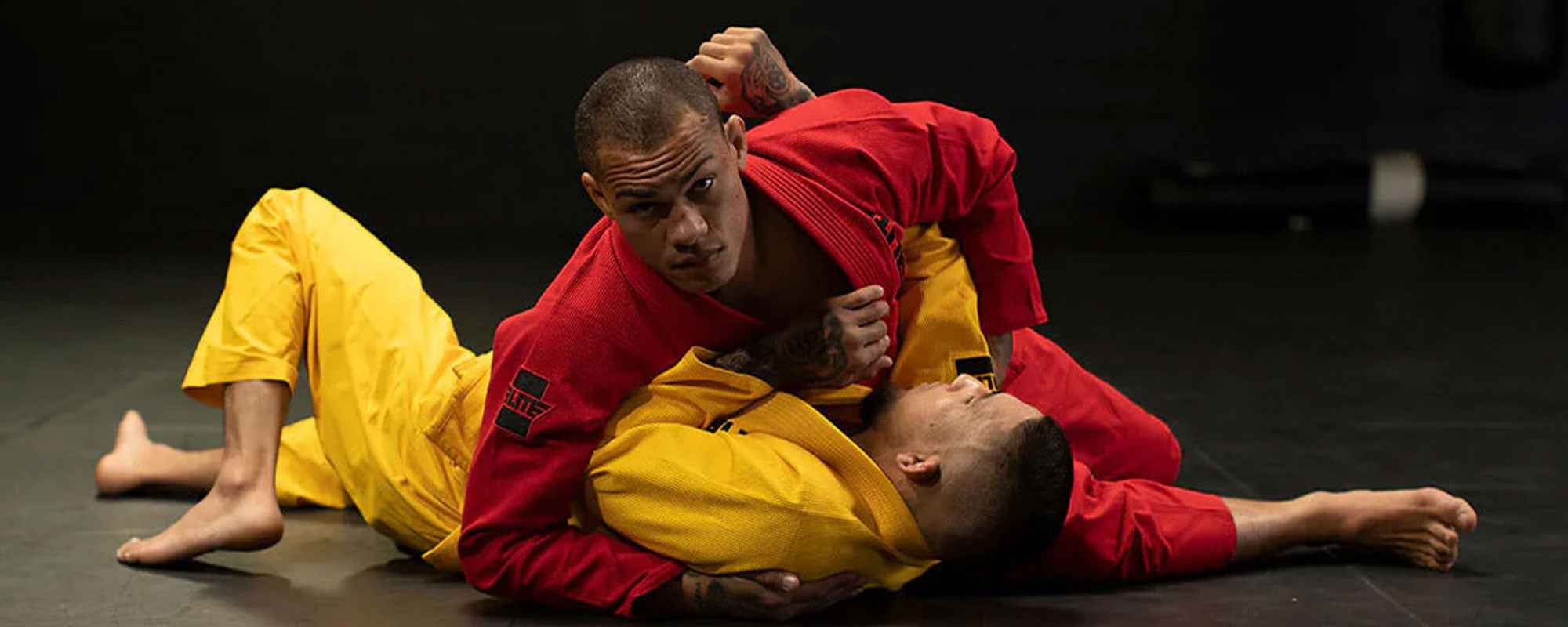Table of content
Being a good boxer is not just about throwing hard punches. No matter how aggressive the professional boxers might seem in the ring, they always keep in mind what measures they could take to prevent injuries during boxing or even during their training sessions.
The majority of the boxing coaches train their boxers’ effective techniques for preventing injuries. landing your fighting combinations or hitting your opponent with punches isn’t the only aspect of boxing, As a fighter, you must know how to prevent injuries, only then you could become better with time.
1. Common Boxing Injuries
No doubt boxing is a rough sport and hard on the body, so the fighters especially the beginners suffer from a lot of common injuries. This could also end up in some serious afflictions, here are some of the common boxing injuries
- Cuts and Bruises: These might not occur during training or sparring sessions but are very common during professional fights.
- Shoulder Dislocation: This might be caused due to a heavy impact on the body, missing out on warm-up before a sparring session, or even due to improper movement of arms while throwing punches.
- Sprains: When frequently using the same type of body muscles, it can result in damage to the muscle and ligaments. Most of the boxer’s complaint about a sprain in the shoulders, knees, and back,
- Fractures: This is not a very common injury, fractures may occur in the wrist, and nose regions. The worst types of fracture which boxers face are the fracture in the rib region.
- Concussion: Due to heavy blow on the head or rapid shaking the consciousness may be lost, vomiting and headaches can also occur, again this injury is not very common and it is suggested to see a doctor when suffering from a concussion
2. How to Prevent Injuries in Boxing
If you are into the boxing sport then here are some tips which can help you to stay safe from serious injuries during fights or training.
2.1. Protective Gear
Wear proper protective gear when you are training, don’t forget to wear high-quality boxing gear. It’s the best option for you, if you wish to prevent injuries, using protective boxing gear, can help to minimize the impact of hits so your body stays safe.
2.2. Head Gear
When in a fight, the opponent’s head is the prime target of any boxer because most of the knockouts occur due to a hard hit on the head. Having sturdy and properly cushioned headgearcan save you from a bad head injury.
2.3. Boxing Gloves
You should have separate types of boxing for sparring and when punching on a sandbag, to know how to choose the right type of boxing gloves click here. Hand injuries could be so dire that they couldn’t recover completely, to keep your hands safe from any injury invest in a good pair of gloves.
2.4. Mouth Guard
Boxers are not allowed to enter the ring without a mouth guard, so it is a must-have for you to prevent injury in the mouth region and save your teeth. Always try to invest in a good quality mouthguard.
2.5. Hand Wraps
Boxing gloves can keep your hands safe from impact injuries up to some extent but to prevent injuries from twisting of the ankle you should use a semi-elastic hand wrap
2.6. Regular Stretching
If you are not doing stretching exercises regularly then you are willingly putting your body in a state where it will be more prone to injuries, Before stretching exercises don’t forget to warm up with high jumps, push-ups, and squats. For stretching focus on the major muscles of your body such as hamstrings, shoulder muscles, back, and quads.
Good addition in stretching could be the use of resistance bands; they are simply a great way for stretching and loosening muscles effectively.
Some of the efficient and recommended exercises for stretching are;
- Knee-to-chest stretch; stretches your back and leg muscles at the same time
- Shoulder stretch; Shoulder muscle is a small muscle and can be inflamed easily; stretching the shoulder is a good idea to prevent injury.
- Hamstring stretches can increase flexibility which is not only needed for training and sparring sessions but also for performing routine tasks.
2.7. Learning correct form and posture
If your shoulders are slouched, your back is arched, and you have no idea what your posture should be while boxing, then get ready to face injuries.
Having a good boxing stance is the first key point preventing injuries. The worst part of facing an injury from the wrong form is that you will never know why the problem is occurring unless a coach tells you.
Some basics for correcting your stance are to stand up straight and keep your feet apart, a secret for maintaining a straight stance is to have a mind-muscle connection, Think of professional boxers who have proper form and try to copy them and somehow you will gradually develop a better boxing stance than before.
To prevent injuries in your knees, don’t ever try to lock your legs by keeping your legs straight. There should always be a slight bend in your knees just as if you are about to squat.
Correcting your form and finding a correct boxing stance is all about time and practice, you can’t learn it overnight so keep calm and you will develop the correct stance over time.
2.8. Improving Endurance
For getting minimum impact from blows while boxing you must need to develop endurance and strength of your body. Once your muscles are in shape and bones are strong your body will tolerate any small injuries and will not leave any hard effect.
For improving body strength, you can try weight training or bodyweight exercises, it helps in the development of muscles and thus improves strength.
Cycling is effective for developing strength of legs, core, and back muscles, it increases stability and increases stamina, so improving endurance cycling can’t be ignored.
Hillwalking is very effective for increasing stamina and developing muscles at the same time. If you live in an area with no hills then climbing stairs can also be beneficial.
2.9. Following a highly nutritious diet
Athletes must stick to a diet that is full of proteins, vitamins, carbohydrates, and good fats. After training the body gets sore and can only be recovered with an effective diet.
When you follow an effective diet, it helps in reducing the risk of fracture and help with the healing of bones faster, also make a routine to drink plenty of fluids every day so that your body stays hydrated.
If your body suffers from dehydration, you will feel fatigued, and eventually, it will result in more chances for injury. The most common problem due to dehydration is concussions.
2.10. Using ointments on the skin
During the fight or after the fight ends, different ointments are used to treat bruises and cuts on the skin. They are extremely important, if not treated properly at the time of impact they can become worse.
Petroleum jelly, Adrenalin, Vitamin-E creams are some good options if you have a cut or bruise and you want immediate first aid for it. Giving timely first aid to cuts can reduce the chances of getting a bad skin injury.
Make sure that before applying any kind of ointment on the cut you wipe it off with an alcohol swab, so the wound is cleaned from any germs and debris.
3. What to do immediately after getting an injury?
As discussed before, boxing is a rough and rigorous sport so you will probably face injuries while sparring. You must know how to immediately deal with such injuries to minimize the impact.
3.1. Getting to Know the Symptoms
First of all, get to know how you feel, if you feel inflammation in muscles then they might be damaged. If there is a tear or pop in the joints and pain when moving it then the joint would be twisted.
Swelling and cramping of muscles is a symptom of strain, you may also feel muscle weakness causing the inability of a muscle to function properly.
If you feel low on energy and have dizziness in the head, it is a sign of dehydration and not following a nutritious diet.
When you can effectively diagnose symptoms of a problem then it would be easier for you to follow a treatment for it. So, recognizing what your body is trying to tell you is the first step in the treatment of an injury.
3.2. Icing
Using a cold compress or ice on the affected muscle can give an instant soothing effect. In addition to this, icing can decrease inflammation as well as swelling. If you are looking for a quick and free painkiller then icing has got your back.
The scientific reason behind using ice on an injury is that ice constricts the blood vessels that carry cytokines to injury; these are the chemicals responsible for inflammation.
3.3. Keeping the Injured Hand Elevated
If you have an injured hand during sparring, try to keep it elevated above the heart level. This helps in reducing the impact of swelling.
The reason behind this is that by keeping the injured part elevated you restrict the flow of white blood cells towards the injury, which helps in restricting swelling.
3.4. Seeing a doctor or Chiropractor
Normally injuries become better and heal within 3 days if treated with proper care, but if you don’t feel any relief after 3 days of injury, it is better to consult a doctor.
Chiropractors are the best friends of every athlete and especially boxers; you should schedule an appointment after every 2-3 months for body adjustments.
4. Conclusion
By adopting these tips, you can prevent injuries in boxing up to some extent, but in sports, like boxing, nothing can save you 100% from having injuries.
You should focus on maintaining a healthy diet and developing body strength, and never try to do sparring without using protective gear.
If you suffer from any injury, don’t take it lightly or ignore it but always take the suggested measures for treating it.



Leave a comment
This site is protected by hCaptcha and the hCaptcha Privacy Policy and Terms of Service apply.